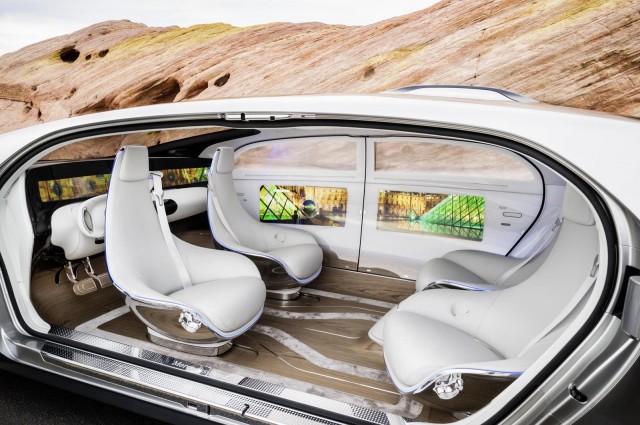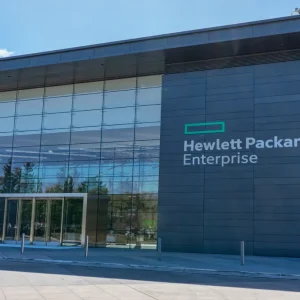
Companies are now generally aware of how IoT technologies can change their work place with interactive and shifting screens, tables, speech-enabled ‘things’ and others. However, a new office trend is just around the corner as intelligent cars take to the road.
In the future, the car is set to become a natural extension of the office with interactive windows, responsive controls and even swivelling seats that allow face-to-face meetings on the road between front and back passangers.
These drivable offices will create a new type of flexible working scheme, where employers will look into allowing employees to work from their car.
"The car has the potential to become the computing device of the future, rather than being purely personal transport", Dr John Bates, CEO of PLAT.ONE told CBR.
He said: "The car is the mobile office of the future. Remote meetings don’t really work, we have to be in person. The only drag is getting there, but now we can work on the way.
"Employees will love it. We know for sure because Apple, Google and Facebook lay on buses in the bay area, and once you are on, you are ‘at work’ and connected. This could add two to four hours of productivity to the working day. It could also completely change everything. Maybe some people will not have an office, and maybe they will work in an autonomous car that takes them places."
In the UK, experts believe Brits will be willing to have their cars transformed into a moving office. Paul Egan, IoTUK principal consultant for hardware and communications at Digital Catapult, told CBR: "The prospect of autonomous personal travel that will free up a significant amount of "dead time" should be applauded. The UK has an interesting relationship with new technology that can sometimes be out of sync with other territories, such as the case with SMS texting.
"This was a technology that was enabled by 2G networks and it was the UK that saw one of the quickest adoption rates despite its apparent limitations. I can see a similar situation here [with drivable offices]."
This week at CES, the consumer show turned into a car exhibition with big auto players making announcements around vehicles.
The automotive industry, however, is no longer an exclusive to auto manufacturers, with software and hardware companies having also taken to the stage to show how they can connect cars to V2V and V2I networks, and also turn the car into an office.
In a first of its kind in the connected car space, Microsoft has revealed it will be deploying Office 365 in a car, having signed a deal with with connected technologies company Harman.
The collaboration will integrate key elements of Microsoft Office 365 productivity suite into Harman infotainment systems.
The project aims to introduce new mobile productivity services, as well as utilise existing products, services and technologies, including cloud platforms, telematics and driver productivity. The aim is to offer better convenience, safety and reliability for drivers and greater operating efficiency for auto manufacturers.
This early driving office will allow those in the car to access Office 365 services through an intelligent personal assistant software. Drivers will be able to schedule meetings, hear and respond to emails, automatically join conference calls without having to manually input the phone number and passcode, and seamlessly manage events and tasks throughout the day.
They will also be able to hold Skype calls and conferences when in park, or on the road with autonomous vehicles.
Peggy Johnson, EVP of business development at Microsoft, said: "By ensuring that Office 365 services are seamlessly integrated with car and driver telematics and performance data, we will allow consumers to be more productive during their driving hours, while enjoying far greater convenience, safety and reliability."
This early application Offfice capabilities in smart cars is a step towards the development of more sophisticated immersive, responsive and personalised systems that will be deployed into cars and change driver habits.
As companies race to create the ultimate driverless car which, according to Dr Bates, is set to evolve and become mainstream in ten years, the real office-car applications are yet to be seen.
Work is already being done by workplace provider Regus, who in partnership with Rinspeed is working on the XchangeE car. The driverless vehicle has been designed to allow the two front seats to swivel backwards, creating a mobile work and meeting space for four people.
The vehicle’s technology and infotainment systems – based on Tesla technology and Harman’s HTML5-based infotainment system – allows passengers to connect to their office, work productively, or make a presentation using a laptop.
Mercedes-Benz is another company looking into the future of the driverless car. In its F 015 Luxury in Motion vehicle, the automaker has unveiled a design that also transforms the car into an office and even includes woden flooring.
With such capabilities, executives and workers stuck in traffic will be able to continue working keeping productivity levels at a higher rate.
Challenges of delivering drivable offices
However, the development of such vehicles will create new questions beyond the security spectrum. Congestion, connectivity and others are top concerns. Steve Bowker, head of strategy and technology at mobile network assurance and analytics company TEOCO, told CBR that from a mobile network perspective, connected cars are set to have a significant impact on capacity and also managing certain types of traffic on the network.
He said: "For driverless cars especially, the need for a reliable and robust mobile signal is crucial. Literally, a matter of life and death.
"Operators therefore need to properly prepare their networks for the effect of support increasing numbers of connected vehicles. They can do so with the help of advanced geolocation network tools that identify where the connected car traffic is within cell coverage areas: and also where the traffic characteristics are becoming dominated by the dynamic effects."
Fatima Vital, director marketing automotive and consumer electronics at Nuance Communications, said that establishing what people want in their cars is a crucial first step, but it pales in comparison to actually delivering the needed solutions.
She told CBR: "This is when automakers and technology companies need to gather at the same table to break some bread and cross a few wires. The way that we stay connected in the car cannot be the same way that we stay connected via our phones, computers and TVs.
"Finding the right solution is an industry-wide initiative, encompassing many of the world’s leading automakers and technology companies."
UK ahead of other nations
According to Egan, if we just consider the additional value that could be generated for the UK economy we should start to look at the components such vehicles will need.
He said: "Top of the list will be low cost, low power, high performance, networked computing. The UK is a recognised global leader in the shape of ARM. Its architecture is at the technological core of the vast majority of mobile and automotive systems. If we then look at the vast array of sensors that will be required, from LIDAR (Light Detection & Ranging) to nanoscale gyroscopes & accelerometers the UK also have a number of significant players in this space."
As the ‘smart driving office‘ still faces barriers over connectivity, power to keep the car going is also an important industry-wide discussion. As cars become smarter, they are also becoming greener.
To power electric cars there are already several thousand charging docks spread across Europe. However, power to charge the ‘smart car office’ could come from the road itself and the UK is at the forefront of such technology.
Government-owned Highways England (HE) is already looking into off road trials where power is sent to electric or hybrid vehicles wirelessly.
In a joint venture with TRL, the government is investing £500 million over the next five years to boost the UK’s automotive industry and reduce CO2 emissions by using intelligent technology.
According to reports, in 2013, 25% of UK CO2 emissions were from transport. The government has committed itself to reducing CO2 emissions by 80% by 2050.
Mike Wilson, Chief Highways Engineer at HE said: "A rapid uptake in ultra low emission vehicles provide a number of significant opportunities for the UK such as attracting a new generation of investment into the UK’s car industry and supply chains and helping economic growth, which we are committed to
support."






